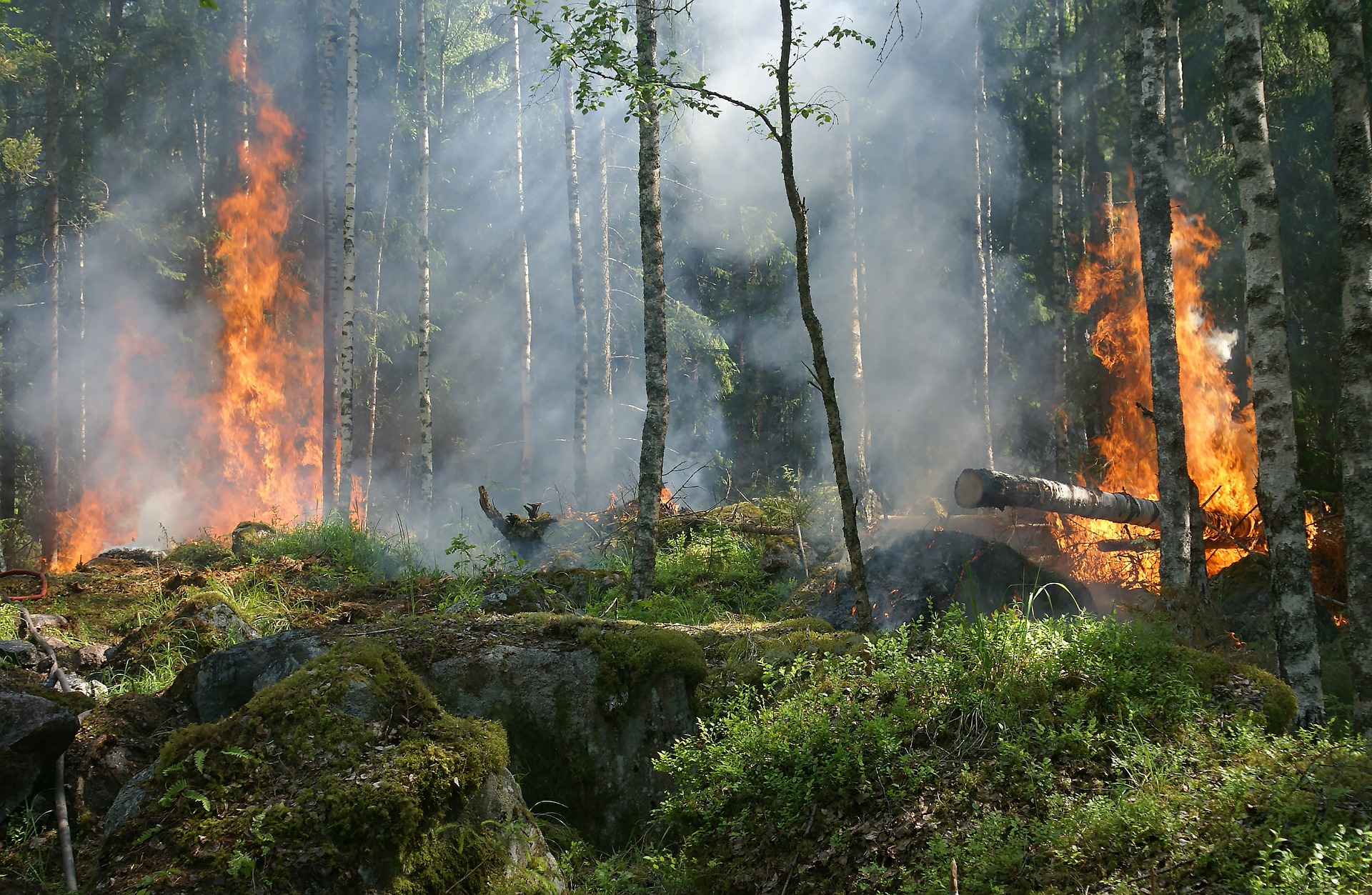
May 6, 2022, by Brigitte Nerlich
The sky is falling and the trees are crying: Reflections on extreme weather
For some weeks now, I wanted to write something about ‘rain bombs’, a relatively new weather/climate phenomenon and metaphor – but I didn’t get round to it. Then, last week, when I sat down to write, thoughts about strong rain were displaced by thoughts about fire and heat. In the end I decided to write a bit about both rain and heat, water and fire.
The sky is falling
In 2021, horrendous floods swept through my home town in Germany. This year, I read about the floods that devastated New South Wales and Queensland in Australia, followed by the terrible floods in KwaZulu-Natal in South Africa a little bit later. When the German floods happened, I thought that ‘this is not just rain, even heavy rain’ – it was rain hitting our town like a ton of bricks, so to speak, and totally unforeseen. Such extreme precipitation events have, however, long been anticipated by climate change models. But still nobody expects them or can even imagine them. In all three cases there was therefore a serious lack of warning.
When reading about the Australian floods, I learned a new word for such rain: ‘rain bombs’ and I became interested in that word and asked myself when it emerged and became more common.
It seems that rain bombs are also called microbursts and have been photographed by storm chasers and others for quite a while, a tornado-like cloud burst – quite a rare phenomenon. But now we seem to be shifting from micro- to macro- to what I would call megabursts, and from bombs to rivers. As the Australian Associated Press reported in March 2022: “Meteorologists say it’s actually an atmospheric river that’s less like a bomb and more like a conveyor belt, delivering a relentless stream of moisture-laden air.”
Whatever the word, as Eric Roston said in 2016: “Evidence shows that the sky is coming down on our heads—the watery part of it, anyway, in larger and larger cascades. It’s largely our own fault.” Indeed: “There’s little question that by stockpiling water vapor, the atmosphere is building a worldwide arsenal of ‘rain bombs’—or, if you like, wet microbursts, macrobursts, or just your typical, Noah-scale deluges.”
Like a lid on a saucepan
You will all have heard about the terrible heatwave in India which is turning part of the continent into a living hell. The metaphor used here is that of a ‘heat dome’. As the Royal Meteorological Society says: ‘In short, a heat dome is created when an area of high pressure stays over the same area for days or even weeks, trapping very warm air underneath – rather like a lid on a pot.” Or, as Sky reported last year, when the Pacific Northwest experienced a heat dome: “Like a lid on a saucepan, it traps hot air underneath, and can cause heatwaves with temperatures well above the norm.”
So, on the one hand we have the sky falling down on us in the shape of rain bombs and on the other we have the sky forming a lid and creating heat domes…. In general, “[t]he range of weather humans can encounter on Earth – the ‘climate envelope’ – is shifting as the planet warms” – so we are told by climate scientists… And it’s getting more and more difficult to anticipate and adapt to such shifts.
The trees are crying
While rain bombs and rivers of rain become more common and heatwaves more frequent, we should not forget another aspect of extreme weather events – the wildfires that have devastated parts of Australia, California, and are raging, yet again, in India and also in New Mexico after a record drought.
People in New Mexico, including relatives of mine, are painfully aware of such weather extremes and their impacts, not only on humans but also on animals and, indeed, trees and forests. At a recent community event about the Cerro Pelado fire near Los Alamos, Christopher Chavez, Tribal Historic Preservation Officer at Kewa Pueblo (Santo Domingo) used some powerful words which have really touched me: “The trees are crying”!!
Those amongst us who don’t want to listen to scientists, might want to listen to the trees…
Image: Pixabay
No comments yet, fill out a comment to be the first

Leave a Reply